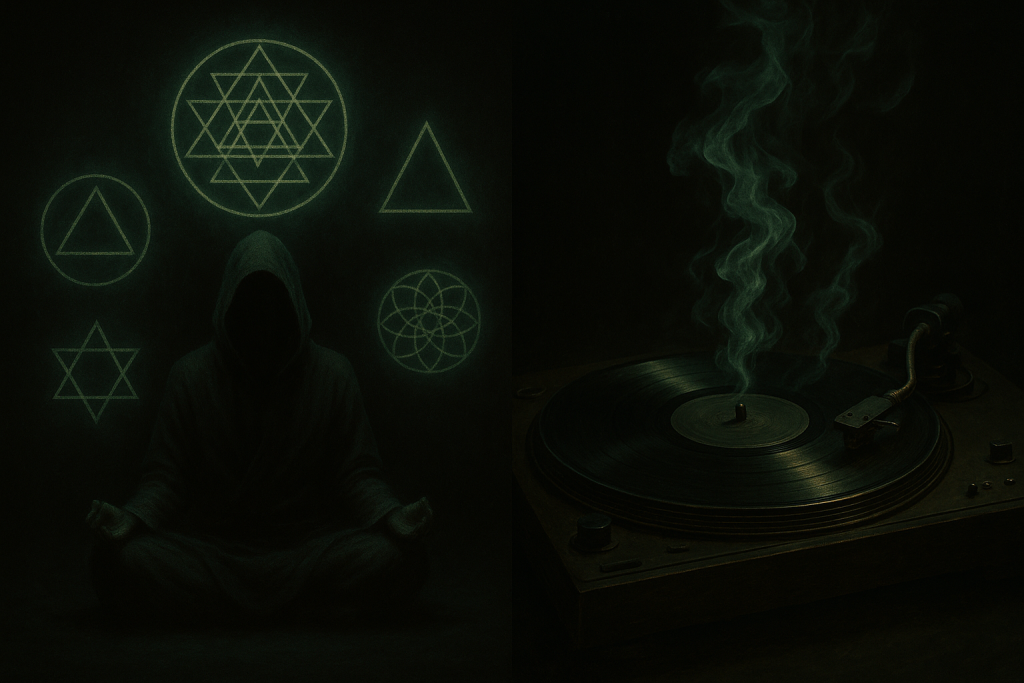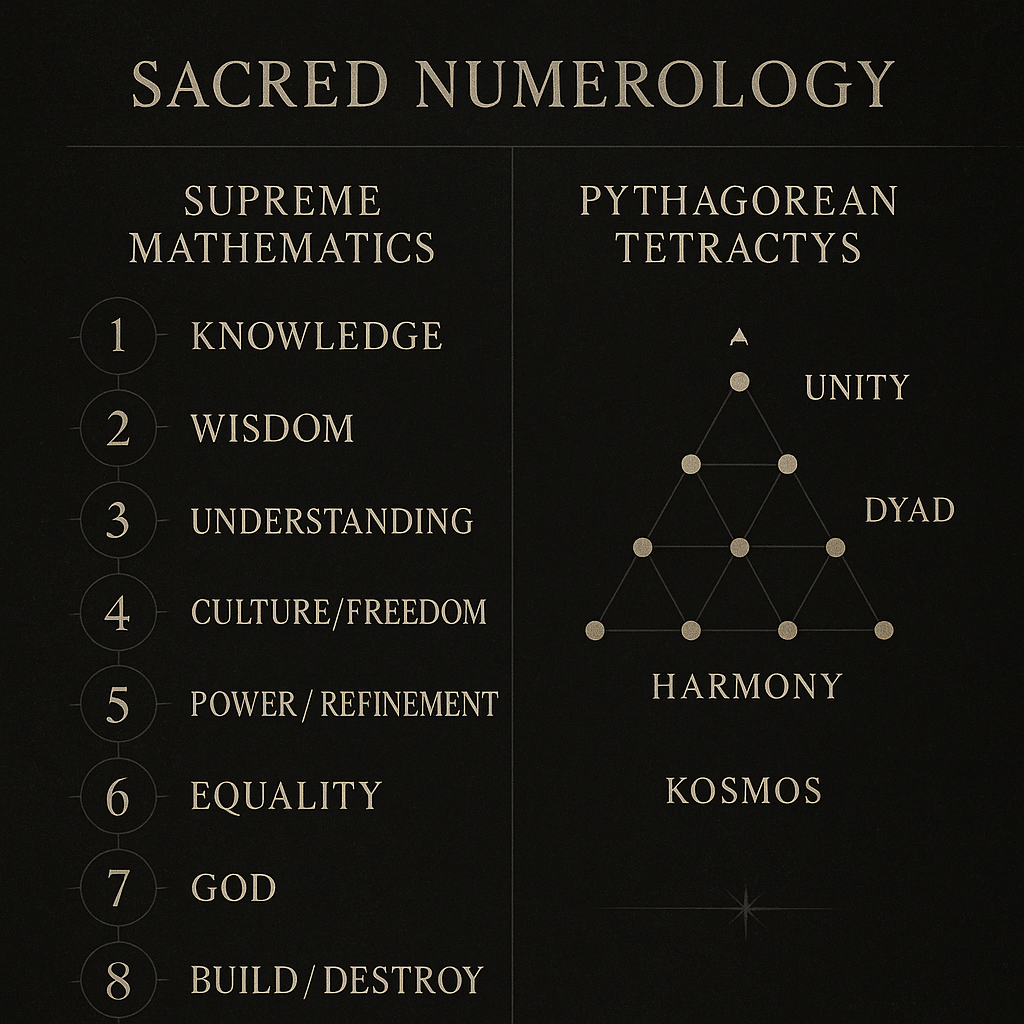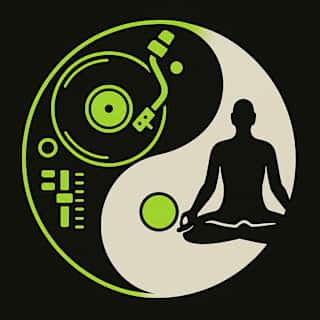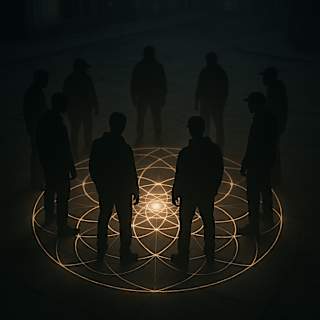
Wu-Tang Clan Spiritual Philosophy Meets Rudolf Steiner: Hip-Hop as Modern Mystery School
Some knowledge can’t be googled.
How is Wu-Tang Clan linked to anthroposophy? The connection runs deeper than most realize. Furthermore, between the boom-bap and the meditation bells lies a frequency where conscious rap mysticism meets Rudolf Steiner’s cosmic equations. Both channeled the same current through different vessels. On one hand, Staten Island ciphers. On the other hand, European lecture halls.
Meanwhile, both knew that real knowledge moves underground. As a result, they encoded symbols the sleeping masses scroll past without seeing. This isn’t about surface comparisons. Instead, this is about recognizing two streams of the same river. Ultimately, the ancient quest to transform suffering into wisdom through esoteric rap lyrics analysis and spiritual science.

Five-Percent Nation Anthroposophy: Supreme Mathematics vs Spiritual Science
First, Wu-Tang Clan spiritual philosophy springs from the Nation of Gods and Earths. When RZA drops “The Wu is comin’ through, with the math, the Universal Truth,” he’s invoking Supreme Mathematics. Therefore, the Five-Percent Nation’s numerical cipher maps cosmic principles onto street reality. Seven equals God. Nine equals Born. Consequently, each number becomes a key to unlock the prison of ignorance.
What is the Five-Percent Nation’s spiritual cosmology? It teaches that the Black man is the original man and living God. Additionally, knowledge flows through mathematical formulas that decode existence itself. This mirrors Rudolf Steiner hip-hop influence more than anyone admits.
Similarly, Steiner worked with different numbers but the same intention. His sevenfold human constitution includes physical body, etheric body, astral body climbing toward spirit-self. As a result, this provided a roadmap for consciousness evolution. In fact, it parallels the Wu’s journey from poverty to godhood. Both systems reject the lie that you’re stuck where you start.
However, the difference isn’t destination. Rather, it’s delivery method. Wu-Tang smuggled enlightenment through beats that knocked in project hallways. Meanwhile, Steiner delivered through lectures that challenged European materialism. One used kung fu metaphors. The other used meditation techniques. Nevertheless, both taught the same curriculum: how to wake up in a world designed to keep you sleeping.
Underground Hip-Hop Spirituality: Codes Within Codes
Every Wu-Tang track functions as a lesson plan for an underground university. For example, “Da Mystery of Chessboxin'” isn’t just wordplay. Instead, it’s a manual for strategic thinking under pressure. Furthermore, the “36 chambers” reference maps the stages of mastery. Therefore, every student of consciousness must navigate these stages. RZA understood what ancient teachers knew. Real wisdom travels through stories, symbols, and riddles.
Does conscious rap use Steiner’s teachings? Not directly. However, the parallels are undeniable. Steiner’s concept of the Akashic Records is a cosmic library containing all knowledge. Nevertheless, it required initiation to access. You couldn’t just walk in and start reading. Instead, you had to prove readiness through disciplined inner work. The truth was there. But it demanded transformation to reach it.
Both traditions knew that wisdom without discipline becomes ego fuel. Consequently, Wu-Tang buried their deepest teachings in multilayered lyrics. These lyrics reward repeated listening. Similarly, Steiner wrapped his insights in dense philosophical language. This filtered out casual browsers. Therefore, the shadow protects what the light would expose to exploitation.
Hip-Hop and Western Esotericism: Street Alchemy Meets Spiritual Science

When Ghostface transforms pain into art, he’s practicing alchemy. Not medieval fantasy of turning lead into gold. Rather, real work: converting trauma into wisdom. Additionally, desperation into inspiration. Every bar born from struggle proves that consciousness can rise from any circumstance.
Similarly, Steiner called this “spiritual science.” He meant systematic transformation of human consciousness. This happens through observation, meditation, and moral development. His three stages of initiation include Imagination, Inspiration, Intuition. These mirror Wu-Tang’s progression from street hustle to artistic mastery to spiritual teaching.
GZA lyricism and Goethean science share the same foundation: deep observation of natural patterns. When GZA raps about scientific principles, he’s channeling Goethe’s approach. This means understanding nature through careful study. It’s the same method Steiner used to develop anthroposophy.
Both paths demand everything. First, RZA spent years studying Buddhism, Islam, and martial arts philosophy. He synthesized traditions most people keep separate. Similarly, Steiner developed anthroposophy by bridging science, art, and religion. This challenged every academic boundary.
Therefore, the shadow between them reveals something crucial. Real knowledge doesn’t respect artificial boundaries. These include “spiritual” and “street,” “academic” and “artistic.” Instead, truth flows where it’s welcomed.
RZA Meditation Techniques vs Steiner Exercises: The Cipher and the Circle

Wu-Tang’s cipher is the circle where MCs trade verses and build collective energy. As a result, it functions as modern ritual space. Knowledge emerges through freestyle exchange. Individual brilliance serves group elevation. Therefore, the ego disappears into something larger.
Similarly, Steiner’s anthroposophical study groups operated on similar principles. Members gathered to explore spiritual questions through shared inquiry. Individual insights contributed to collective understanding. Consequently, personal development served universal evolution.
RZA meditation techniques include chess as moving meditation. Additionally, sampling as sonic alchemy, and ciphering as group consciousness building. Meanwhile, Steiner exercises focused on imagination, inspiration, and intuitive knowing. Different methods. Same goal: expanded awareness.
Both models reject the isolation of mainstream spirituality. They also reject competition of mainstream rap. Instead, they prove consciousness grows fastest in communion. This happens when awakened individuals choose to lift each other rather than hoard insights.
Wu-Tang Clan Rudolf Steiner Connection: The Critics and the Truth
Every esoteric system attracts accusations of elitism. For instance, Wu-Tang gets criticized for appropriating Asian culture. Similarly, Steiner gets criticized for Eurocentric bias. Both traditions have members who use knowledge to feel superior rather than become serviceable.
But the shadow reveals deeper truth. Every genuine wisdom tradition eventually faces this challenge. How do you maintain standards while staying accessible? Additionally, how do you preserve depth while avoiding exclusion?
However, the real test isn’t whether a system is perfect. Instead, it’s whether it produces transformation in those ready to receive it. Wu-Tang inspired a generation of conscious rappers exploring the intersection of spirituality and street knowledge. Meanwhile, Steiner’s insights continue through Waldorf schools and biodynamic farms treating earth as sacred.
The Frequency Underground
What connects these seemingly different traditions isn’t coincidence. Instead, it’s recognition. The same impulse that drove ancient mystery schools now moves through modern forms. The temples are closed. But teaching continues. The robes are gone. But transmission remains.
Both Wu-Tang and Steiner understood that highest knowledge often comes disguised as entertainment or education. The masses hear beats or read books without catching deeper frequency. However, those ready to receive always find what they’re seeking.
Underground hip-hop spirituality continues this tradition. Artists like Kendrick, Lupe, and newer cats carry the torch. Therefore, they prove that conscious rap mysticism isn’t dead, just evolved.
In the end, both paths lead to the same destination. The recognition that consciousness is our birthright, not accident. Wisdom traditions survive by adapting forms while preserving essence. Furthermore, the shadow between apparent opposites often contains the most profound truths.
The loudest minds echo nothing. But in the silence between samples and theories, something real starts speaking.
Some call it Wu-Tang. Others call it anthroposophy. However, the initiated know it by another name: the sound of awakening itself, finding new vessels for eternal flow. Hip-hop as modern mystery school isn’t metaphor. Instead, it’s method.